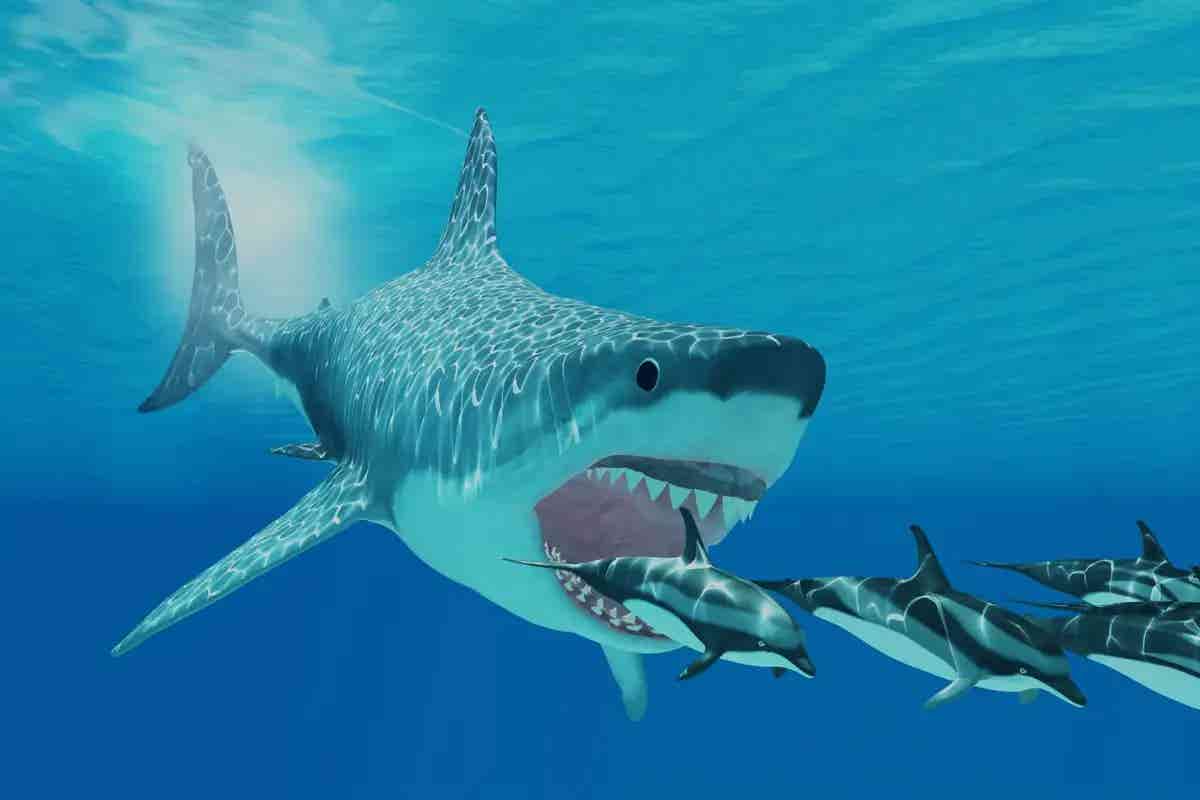The surprising truth behind the extinction of Megalodons
Research promises to reshape our understanding of Megalodon behavior, the dynamics of ancient ocean life, and the cause of their extinction

Research promises to reshape our understanding of Megalodon behavior, the dynamics of ancient ocean life, and the cause of their extinction. (CREDIT: Catmando/Shutterstock)
In the world of paleontology, discoveries are often built upon the meticulous examination of fossilized remnants, and a new revelation about the Megalodon, a colossal shark that prowled ancient seas millions of years ago, has turned the tide of scientific understanding.
This groundbreaking finding suggests that the prehistoric giant was more slender and possibly even longer than previously imagined. Such a revelation promises to reshape our understanding of Megalodon behavior, the dynamics of ancient ocean life, and the cause of their extinction.
The Megalodon, also known as the megatooth shark, has often been depicted as an oceanic monstrosity in popular culture, making its appearances in blockbuster films like "The Meg" (2018) and "Meg 2: The Trench" (2023).
Traditionally, scientists estimated that this awe-inspiring creature reached lengths of at least 50 feet, with some theories proposing staggering measurements of up to 65 feet. However, a fundamental challenge emerges when studying the Megalodon – its existence is primarily known through scattered teeth and vertebrae in the fossil record, an incomplete dataset from which to draw concrete conclusions.
Related Stories
Consequently, prior research frequently relied on the modern great white shark as a surrogate for reconstructing Megalodon physiology, ultimately portraying it as round and stocky, akin to its modern counterpart.
This scientific paradigm, however, has now been shaken to its core. Dr. Phillip Sternes, a biologist at the University of California, Riverside (UCR), and the lead author of the revelatory study, declared, "Our team reexamined the fossil record and discovered the Megalodon was more slender and possibly even longer than we thought. Therefore, a better model might be the modern mako shark. It still would have been a formidable predator at the top of the ancient marine food chain, but it would have behaved differently based on this new understanding of its body."
The journey to this groundbreaking insight was the result of a global collaboration, with 26 scientists from around the world joining forces. Dr. Kenshu Shimada, a paleobiology professor at DePaul University, and one of the co-leaders of the study, described the pivotal moment when their research team realized the critical discrepancy in the estimated body lengths of Megalodon specimens. It was this inconsistency that inspired the team to embark on a new approach.
A fundamental challenge emerges when studying the Megalodon – its existence is primarily known through scattered teeth and vertebrae in the fossil record, an incomplete dataset from which to draw concrete conclusions. (CREDIT: DePaul University/Kenshu Shimada)
The key to unraveling the Megalodon's secrets lay in comparing its vertebrae fossils to those of living lamniform shark relatives. Sternes elaborated on their methodology, stating, "We measured the whole vertebral skeleton of a living great white shark with a CT scanner and compared that to the previous reconstruction of the Megalodon vertebral column. It was still a giant, predatory shark. But the results strongly suggest that the Megalodon was not merely a larger version of the modern great white shark."
While the Megalodon's reputation as one of the largest marine predators ever remains unchallenged, this newfound knowledge about its slimmer physique has profound implications. A leaner and more elongated body indicates that the Megalodon likely possessed a longer digestive canal, which could have led to enhanced nutrient absorption. This revelation opens up the possibility that the ancient shark may not have needed to feed as frequently as previously believed.
UC Riverside biologist and paper first author Phillip Sternes holding a Megalodon tooth. (CREDIT: Douglas Long/California Academy of Sciences)
Dr. Sternes explained, "With increased ability to digest its food, it could have gone for longer without needing to hunt. This means less predation pressure on other marine creatures. If I only have to eat one whale every so often, whale populations would remain more stable over time."
This brings us to one of the most intriguing aspects of this research - its potential impact on the understanding of Megalodon extinction. While some shark scientists have theorized that a natural decline in prey availability led to the Megalodon's demise, Dr. Sternes proposes an alternative perspective, supported by the revised understanding of its physique.
Photographic (*) and CT images (**) of preserved specimens of extant white shark (Carcharodon carcharias) and salmon shark (Lamna ditropis). (CREDIT: Palaeontologia Electronica)
"I believe there were a combination of factors that led to the extinction, but one of them may have been the emergence of the great white shark, which was possibly more agile, making it an even better predator than the Megalodon," Sternes conjectured. "That competition for food may have been a major factor in its demise."
The implications of this revelation are far-reaching. It extends beyond mere scientific curiosity, touching upon the very fabric of ancient marine ecosystems and their influence on the oceans as we know them today. The international team of shark experts, hailing from the United States, United Kingdom, Austria, France, Japan, Mexico, Brazil, and Australia, agrees that this revised understanding of ancient marine life carries a profound ripple effect still visible in our modern oceans.
Model of megalodon shark jaws at the American Museum of Natural History, in New York. (CREDIT: Wikipedia)
"Now that we know it was a thinner shark, we need to reinvestigate its lifestyle, how it really lived, and what caused it to die," Dr. Sternes emphasized. "This study represents a major stepping stone for others to follow up on."
This scientific breakthrough reminds us that even the most imposing creatures of the past can still surprise us with their hidden secrets, waiting to be unearthed by the curious minds of scientists around the globe.
Note: Materials provided above by The Brighter Side of News. Content may be edited for style and length.
Like these kind of feel good stories? Get the Brighter Side of News' newsletter.
Joshua Shavit
Science & Technology Writer | AI and Robotics Reporter
Joshua Shavit is a Los Angeles-based science and technology writer with a passion for exploring the breakthroughs shaping the future. As a contributor to The Brighter Side of News, he focuses on positive and transformative advancements in AI, technology, physics, engineering, robotics and space science. Joshua is currently working towards a Bachelor of Science in Business Administration at the University of California, Berkeley. He combines his academic background with a talent for storytelling, making complex scientific discoveries engaging and accessible. His work highlights the innovators behind the ideas, bringing readers closer to the people driving progress.



